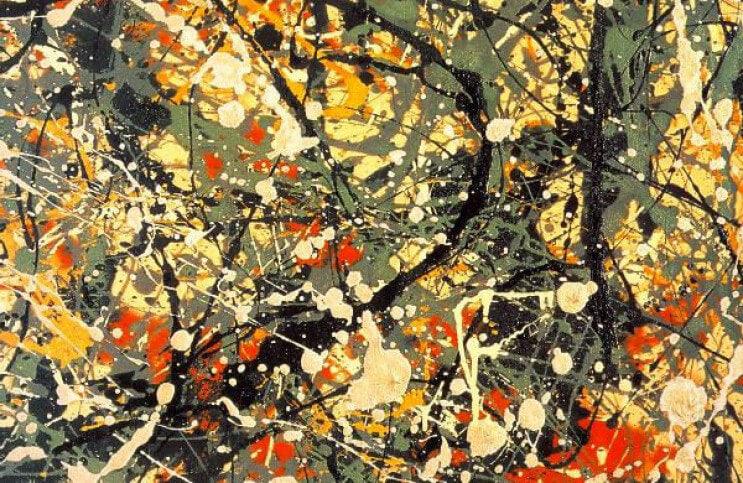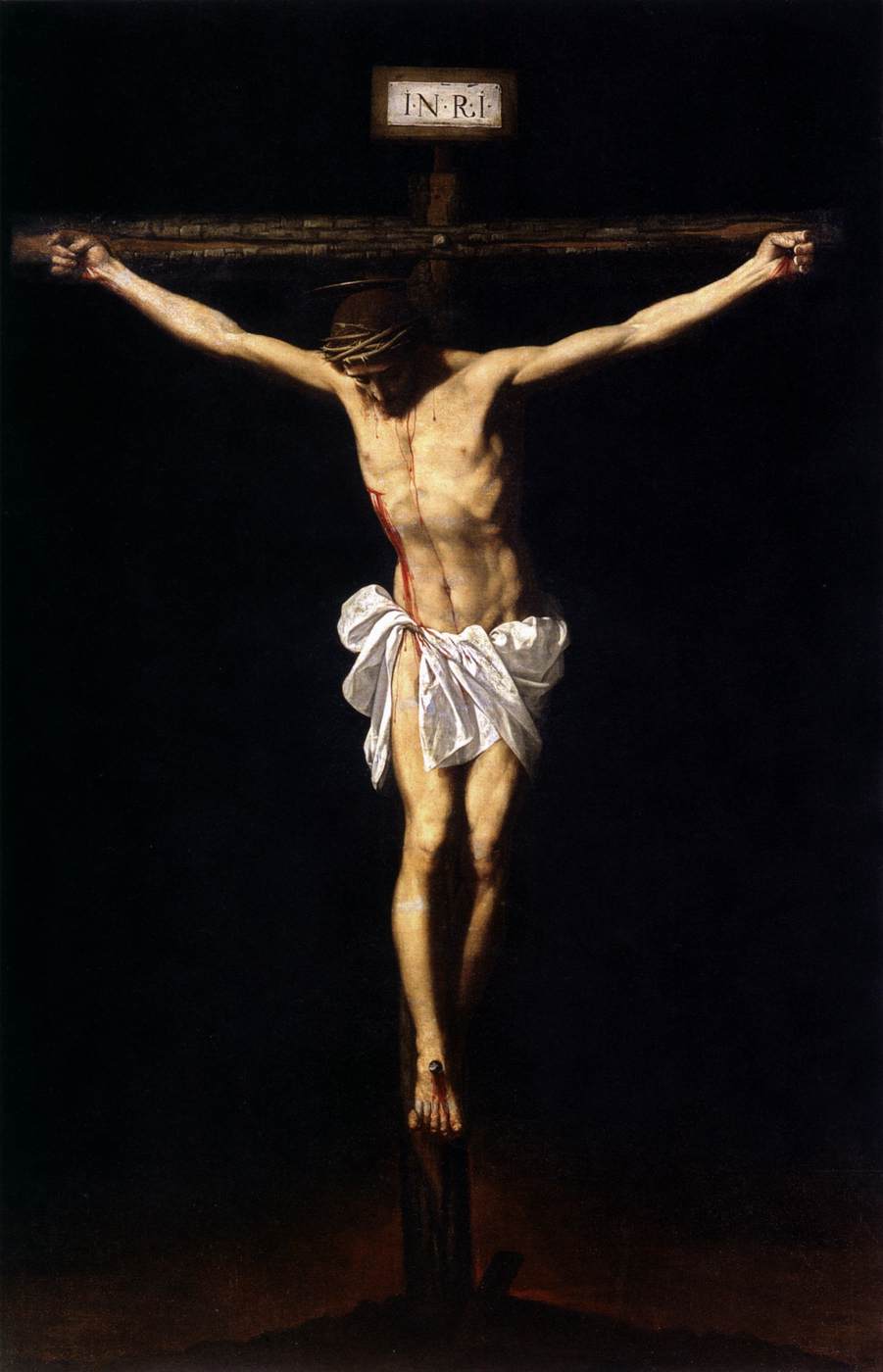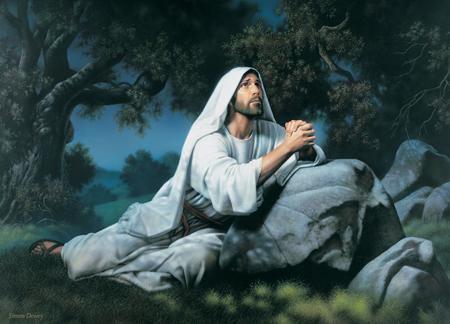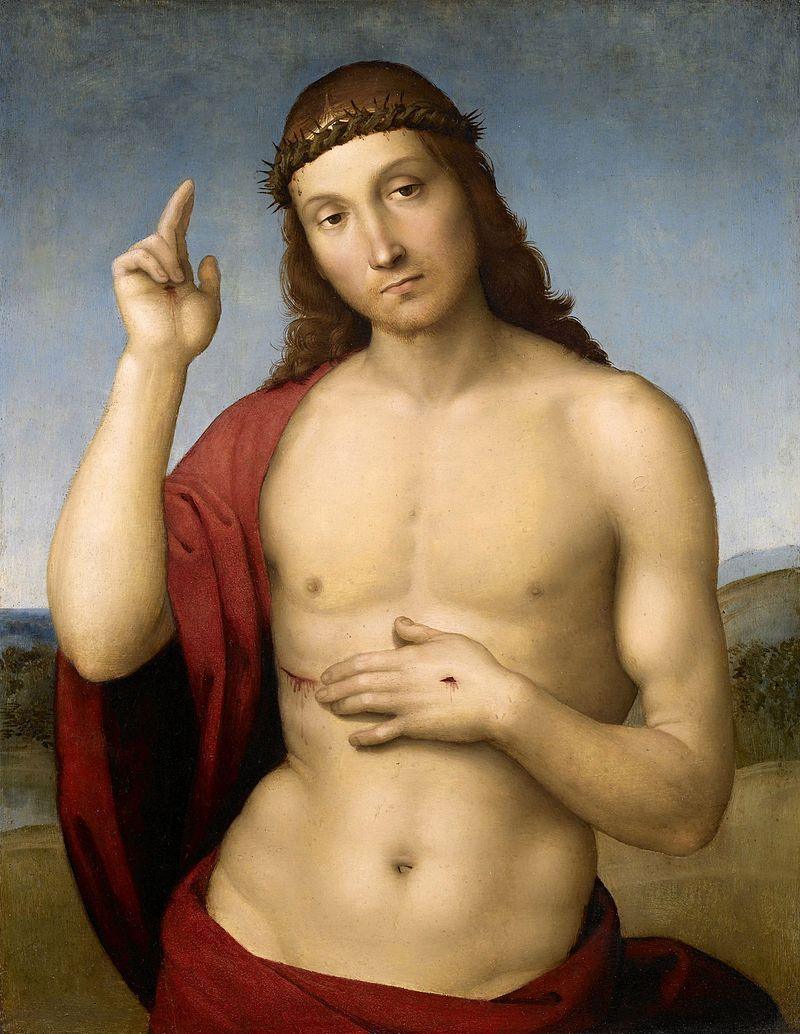Abstract expressionism is the term applied to the new forms of abstract art developed by American painters like Jackson Pollock, Mark Rothko, and Willem de Kooning in the 1940s and 1950s. It is often characterized by gestural brushstrokes or marks, and the impression of spontaneity.

Abstract expressionism - The Blue Poles by Jackson Pollock
Although it is the accepted designation, abstract expressionism is not an accurate description of the body of work created by these artists. In fact, the movement encompassed many different painting styles that varied in both technique and quality of expression. Despite this variety, the paintings of abstract expressionism share several general characteristics. They often use degrees of abstraction; that is, they represent unrealistic forms or, at the extreme, forms not drawn from the visible world (non-objective). They emphasize free, spontaneous, and personal emotional expression, and exercise considerable freedom of technique and execution to achieve this goal, with a special emphasis on exploiting the variable physical character of painting to evoke expressive qualities (e.g., sensuality, dynamism, violence, mystery, lyricism). They show a similar emphasis on the intuitive and unstudied application of that painting in a form of psychic improvisation similar to the automatism of the Surrealists, with a similar intention to express the force of the creative unconscious in art. The artists often show a similar emphasis on abandoning conventionally structured composition built from discrete and segregable elements and replacing it with a single field, net, or other unified and undifferentiated image existing in an unstructured space. Finally, the paintings fill large canvases to give these aforementioned visual effects both monumentality and absorbing power.
The abstract expressionists were primarily based in New York City and were also known as the New York school. The name evokes their aim of making art that, although abstract, is also expressive or emotional in its effect. They were inspired by the surrealist idea that art should arise from the unconscious mind and by the automatism of the artist Joan Miró.
In the Big Apple, a small group of loosely affiliated artists created a stylistically diverse body of work that introduced new radical directions in art and changed the focus of the art world. Without being a formal association, the artists invariably known as "Abstract Expressionists" or "The New York School" shared some common assumptions. Among others, artists like Jackson Pollock, Willem de Kooning, Franz Kline, Lee Krasner, Robert Motherwell, William Baziotes, Mark Rothko, Barnett Newman, Adolph Gottlieb, Richard Pousette-Dart, and Clyfford Still boldly advanced formally in search of meaningful content. Breaking with the accepted conventions in both technique and subject, the artists created monumental-scale works that stood as reflections of their individual psyches and, in doing so, sought to access universal internal sources. These artists valued spontaneity and improvisation and placed utmost importance on the process.

Abstract expressionism - Abstraction by Willem de Kooning
The work of abstract expressionists resists stylistic categorization but can be grouped around two basic inclinations: an emphasis on dynamic and energetic gesture as opposed to a reflective and cerebral approach to more open color fields. In any case, the images were primarily abstract.
The early abstract expressionists had two notable predecessors: Arshile Gorky, who painted suggestive biomorphic forms using a delicately linear and free liquid paint application, and Hans Hofmann, who used dynamic and heavily textured brushstrokes in abstract works but with conventional composition. Another significant influence on nascent abstract expressionism was the arrival on American shores in the late 1930s and early 1940s of a large number of surrealists and other major European avant-garde artists fleeing Nazi-dominated Europe. Such artists greatly stimulated the native painters of New York City and gave them a more intimate view of the avant-garde of European painting. Generally, the abstract expressionist movement is considered to have begun with the paintings created by Jackson Pollock and Willem de Kooning in the late 1940s and early 1950s.

Abstract expressionism - One Year the Milkweed by Arshile Gorky
Abstract expressionism - Such is the Path of the Stars by Hans Hofmann
Types of Abstract Expressionism
Despite the diversity of the abstract expressionist movement, three general approaches can be distinguished. One, "action painting," is characterized by a loose, rapid, dynamic, or forceful handling of paint in sweeping or slashing brushstrokes and in techniques partially dictated by chance, such as dripping or pouring paint directly onto the canvas. Jackson Pollock first practiced action painting by pouring commercial paints onto raw canvases to build up complex and tangled swathes of paint in exciting and suggestive linear patterns. de Kooning used extremely vigorous and expressive brushstrokes to create images rich in colors and textures. Kline used bold and sweeping black strokes on a white canvas to create markedly monumental forms.

The middle ground within abstract expressionism is represented by various mixed styles, ranging from the more lyrical and delicate images and fluid forms of Guston and Frankenthaler's paintings to the almost calligraphic, forceful, and clearly structured images of Motherwell and Gottlieb.
The third approach, and the least emotionally expressive, came from Rothko, Newman, and Reinhardt. These painters used large areas, or fields, of flat color and thin, translucent paint to achieve calm, subtle, almost meditative effects. The color field painter was Rothko, most of whose works consist of large-scale combinations of rectangular areas of solid colors with soft edges that tend to glow and resonate.

Within abstract expressionism, there were two major groupings: the so-called action painters, who attacked their canvases with expressive brushstrokes; and the color field painters, who filled their canvases with large areas of a single color.
The action painters were led by Jackson Pollock and Willem de Kooning, who worked in a spontaneous and improvisational manner, often using large brushes to make sweeping gestural marks. Pollock placed his canvas on the ground and danced around it pouring paint from the can or dragging it from the brush or a stick. In this way, the action painters directly translated their inner impulses onto the canvas.
The second group included Mark Rothko, Barnett Newman, and Clyfford Still. These artists were deeply interested in religion and myth and created simple compositions with large areas of color intended to produce a contemplative or meditative response in the viewer. In an essay written in 1948, Barnett Newman said: 'Instead of making cathedrals with Christ, man or 'life', we’re making them with ourselves, with our own feelings.' This approach to painting developed around 1960 into what became known as color field painting, characterized by artists using large areas of more or less a single flat color.
Abstract expressionism developed in the context of diverse and overlapping sources and inspirations. Many of the young artists had started in the 1930s. The Great Depression produced two art movements that were popular, regionalism and social realism, neither of which satisfied this group of artists' desire to find a content rich in meaning and with a scent of social responsibility, yet free from provincialism and explicit politics. The Great Depression also spurred the development of government relief programs, including the Works Progress Administration (WPA), a jobs program for unemployed Americans in which many members of the group participated and which allowed so many artists to establish a career.
But it was the exposure to and assimilation of European modernism that set the stage for more advanced American art. There were several places in New York to see avant-garde art from Europe. The Museum of Modern Art opened in 1929, and there artists saw a rapidly growing collection acquired by director Alfred H. Barr, Jr. They were also exposed to innovative temporary exhibitions of new work, including Cubism and Abstract Art (1936), Fantastic Art, Dadaism, Surrealism (1936-1937), and retrospectives of Matisse, Léger, and Picasso, among others.
Another forum for seeing the most advanced art was the Albert Gallatin's Museum of Living Art, which was housed at New York University from 1927 to 1943. There abstract expressionists saw the work of Mondrian, Gabo, El Lissitzky, and others. The precursor to the Solomon R. Guggenheim Museum, the Museum of Non-Objective Painting, opened in 1939. Even before that date, its collection of Kandinsky had been publicly exhibited several times. The lessons of European modernism were also disseminated through teaching. The German expatriate Hans Hofmann (1880–1966) became the most influential modern art teacher in America, and his impact reached both artists and critics.
The crisis of war and its aftermath are key to understanding the concerns of the abstract expressionists. These young artists, worried about the darker side of man and anxiously aware of human irrationality and vulnerability, wanted to express their concerns in a new art of meaning and substance. European surrealists opened new possibilities with their emphasis on accessing the unconscious. A surrealist device for freeing oneself from the conscious mind was psychic automatism, in which automatic gesture and improvisation run free.
Initially, the abstract expressionists, in search of a timeless and powerful theme, turned to primitive myth and archaic art for inspiration. Rothko, Pollock, Motherwell, Gottlieb, Newman, and Baziotes sought expression in ancient or primitive cultures. Their early works display pictographic and biomorphic elements transformed into personal code. Jungian psychology was also compelling in its affirmation of the collective unconscious. The frankness of expression was paramount, and it was best achieved without premeditation. In a famous letter to the New York Times (June 1943), Gottlieb and Rothko, with Newman’s help, wrote: “For us, art is an adventure in an unknown world of imagination that is free of fantasies and violently opposes common sense. There is no such thing as good painting about nothing. We assert that the subject is critical.”

Abstract expressionism - Wheels by Adolph Gottlieb
Abstract Expressionism at its height: Action Painting
In 1947, Pollock developed a radically new technique, pouring and dripping diluted paint onto a raw canvas placed on the ground (as opposed to traditional painting methods where pigment is applied with a brush on a stretched canvas placed on an easel). The paintings were completely non-objective. In their subject (or apparent lack of one), scale (huge) and technique (brushless, no stretchers, no easels), the works shocked many viewers. De Kooning was also developing his own version of a highly charged gestural style, alternating between abstract work and powerful iconic figurative images. Other colleagues, including Krasner and Kline, were equally committed to creating a dynamic gesture art in which every inch of an image is completely loaded. For abstract expressionists, the authenticity or value of a work lies in its frankness and immediacy of expression. A painting is meant to be a revelation of the artist's true identity. The gesture, the artist's "signature," is evidence of the actual process of creating the work. It is in reference to this aspect of the work that the critic Harold Rosenberg coined the term "action painting" in 1952: “At a certain moment, the canvas came to appear to one American painter after another as a stage on which to act, rather than as a space in which to reproduce, redesign, analyze, or 'express' an object, real or imagined. What was going onto the canvas was not a picture but an event.”
Abstract Expressionism at its height: the Color Field
Another path lay in the expressive potential of color. Rothko, Newman, and Still, for example, created art based on simplified, large-format fields dominated by color. The impulse was generally reflective and cerebral, with simplified pictorial means to create a kind of elemental impact. Rothko and Newman, among others, spoke of a goal of achieving the "sublime" rather than the "beautiful," recalling Edmund Burke in a desire for grand and heroic vision as opposed to a calming or comforting effect. Newman described his reductionism as a means to “liberate ourselves from the obsolete accessories of a dated and antiquated legend… to free ourselves from the impediments of memory, association, nostalgia, legend, and myth which have been the devices of painting in Western Europe.”
For Rothko, the soft-edged rectangles of luminescent color should provoke in viewers an almost religious experience, even provoking tears. Like with Pollock and the others, scale contributed to meaning. For the time, the works were large scale. And they were intended to be viewed in relatively close environments, so that the viewer would feel practically enveloped in the experience of confronting the work. Rothko said: "I paint large to be intimate." The notion is towards the personal (authentic expression of the individual) rather than the grand.
Abstract Expressionism: its impact
Abstract expressionism had a significant impact on the American and European art scene during the 1950s. In fact, the movement marked the shift of the creative center of modern painting from Paris to New York City in the postwar decades. Over the course of the 1950s, younger followers of the movement increasingly followed the lead of the color field painters, and by 1960, its participants had generally moved away from the highly charged expressiveness of the action painters.
During this time, the works were widely seen in traveling exhibitions and through publications. In the wake of abstract expressionism, new generations of artists, both American and European, were profoundly shaped by the advancements achieved by the first generation and created their own significant expressions based on those who forged the path.
KUADROS ©, a famous painting on your wall.










